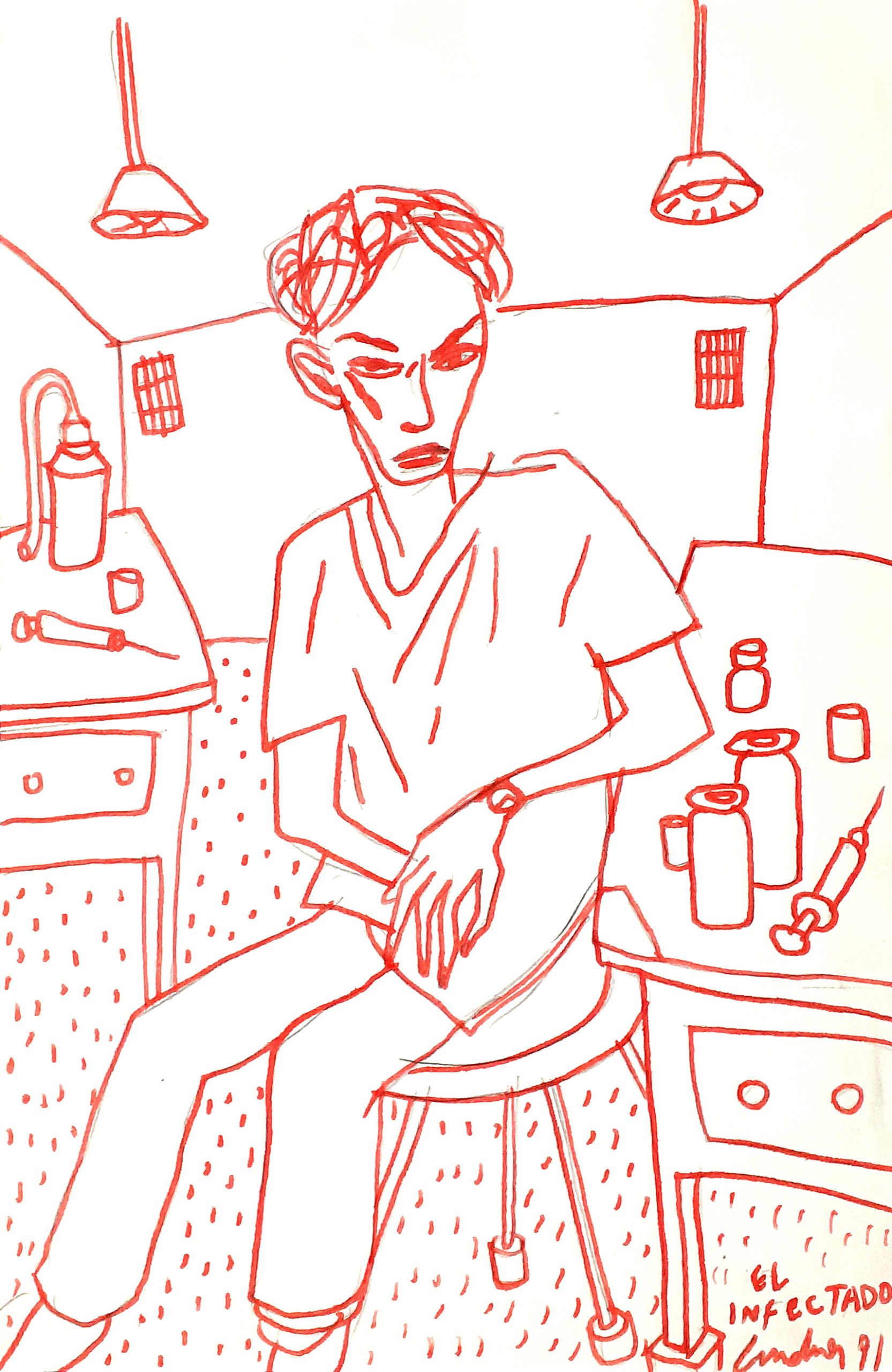The work of Lux Lindner (Buenos Aires 1966) encompasses different disciplines such as painting, performance, sound ambience, animation film production, objects and scenic texts, always vertebrated by drawing. He finds his roots and center of gravity in Argentina ́s historical developments contemplated from a broad perspective, attentive to its confidential and prophetic aspects.
He studied at a technical school and began a career in graphic design, where he deepened an interest in technical forms that he then transferred to painting, often coming from old aeronautical or naval engineering manuals and representing, somehow, the failed project of industrialization that ended up decaying in Argentina in the mid-70s.
In his first solo show in 1990, his works combined references to Ernesto Deira, rock graphics and comics, moving away from the expressiveness and pictorial materiality -which had predominated in Argentina during the 1980s- and renewing a certain geometric and formal imaginary. Since then, his work visualizes the contradictions of acquiring a technical education in a country whose industry constantly fails. According to critic Claudio Iglesias, “it is not by chance…that he is compared to Fernando Fader, the Mendoza native by adoption who studied hydroelectric engineering to electrify his province and, after a series of political disagreements that curtailed the ambitious project, devoted himself to painting sheep grazing in the open air”. Italian futurism is another great source of inspiration for Lindner, precisely because it is a movement that has also experienced the contradictions of embracing faith in modernity in a strongly underdeveloped context.
An avid reader, music lover and intellectually curious, Lindner has an in-depth knowledge of Argentine literature and history and has been described as one of the most original and mordant minds on the local scene. His unexpected views on our society and culture are always informed by his multiple readings, as well as by a particular sense of humor. He develops drawing as his main artistic practice, an almost unstoppable activity running parallel to his thought processes. He has skillfully managed to quote different styles such as technical ink drawings (from the moment they were made by hand), expressive line drawings or colored pencil illustrations. At first approach, they appear as fantastic and almost surreal images; in reality, they are heavily encoded with layers of references to political and historical events, as well as pop culture, opera or sports.
He has had solo exhibitions, including Microcyclonic Catheter (2021) at Fundación Andreani, Choripanipazus. EXE (2021), Monumento al Contrabandista Desconocido (2018), Falklands Crush Saga (2015) and Bring Me the Head of the Wagnerian Equalizer (2013) at Galería Nora Fisch, Acercamiento Infinito (2010) at Centro Cultural Recoleta, El Nacimiento de la TV Color por el Espíritu del Futbol (2006) at Galería Braga Menéndez, Mater Triunfalis (1995) at Instituto de Cooperación Iberoamericana and Armas Largas (1993) at Galería del Rojas.
Among his participations in group shows are El Arte es un Misterio (2022) at Museo Fortabat, Salón Nacional de Artes Visuales (2021), What’s Love got to do with it (2019) at the Drawing Center in New York, Performance Biennial BP19 (2019), En la Persistencia de las Cosas (2017) at Casa Lope de Vega de Plataforma Arco Madrid and Excéntricos y Superilustrados (2016) at the Museo de Arte Moderno in Buenos Aires.


 Lindner Lux
Lindner Lux